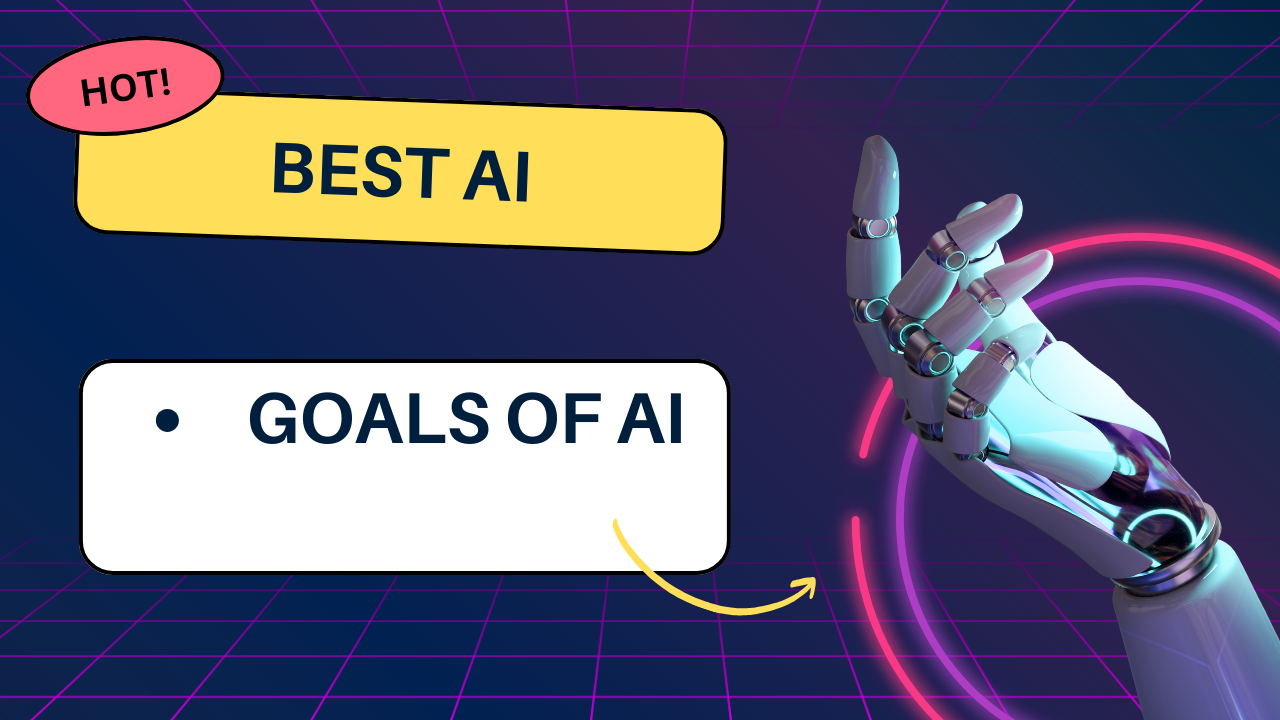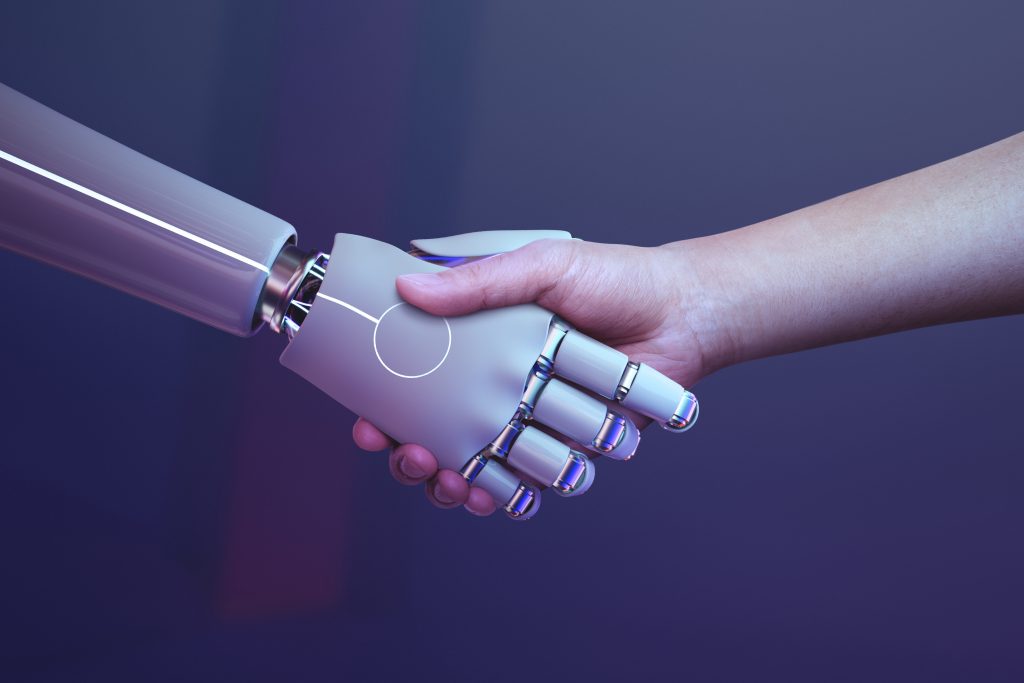Goals of AI
future goals of ai

future goals of ai
Goals of AI Class 9
- aim to improve computer function which are related to human Knowledge e.g. Reasoning, Learning, Problem solving, etc.
| reasoning | learning | Proble solving |
| judgement, dession Prediction making | enhance the awareness | Apply logic with decision making concept |
future goals of ai
- to create expert system → exhibit intelligence behaviour, Learn, demonstrate explain & advice its users.
future goals of ai
- to implement human Intelligence into machines. – Creating system that understand, think, learn & behave like humans.
future goals of ai by ai goals table
Table Goals of AI
| ||
1. Automation:2. Problem Solving3. Machine Learning4. Natural Language Processing (NLP5. Computer Vision6. Robotics7. Personalization8. Personalization9. Medical Diagnosis and Healthcare10. Autonomous Vehicles11. Natural Human-Machine Interaction12. Ethical AI13. AI for Scientific Discovery:14. Artificial General Intelligence (AGI15. Cost Reduction:16. Environmental Sustainability17. Financial Analysis18. Security19. Agriculture | 20. Entertainment21. Customer Service22. Supply Chain Optimization23. . Energy Management24. Customer Service25. . Supply Chain Optimization26. Energy Management27. Language Translation28. . Predictive Maintenance29. . Drug Discovery30. . Legal Research31. Social Media Analysis32. Accessibility33. . Space Exploration34. . Art Creation35. Art Creation36. Disaster Response37. . Behavioral Analysis38. . Scientific Research39. Environmental Monitoring40. Education | |
Smart speaker with Alexa (Blue) buy now Virtual assistants: smart ai
future goals of ai
- Automation: To develop AI systems that can perform tasks and processes autonomously, reducing the need for human intervention.
- Problem Solving: To create AI systems capable of solving complex problems and making decisions based on data and logic.
- Machine Learning: To improve AI’s ability to learn from data and adapt to new information and environments.
future goals of ai
- Natural Language Processing (NLP): To enable AI systems to understand, generate, and interact with human language in a natural way.
- Computer Vision: To develop AI systems that can interpret and understand visual information from the world, such as images and videos.
- Robotics: To create intelligent robots and autonomous machines that can perform tasks in the physical world.
- Personalization: To provide personalized experiences and recommendations for users based on their preferences and behaviors.
- Medical Diagnosis and Healthcare: To use AI for early disease detection, treatment optimization, and improving healthcare outcomes.
- Autonomous Vehicles: To develop self-driving cars and other autonomous transportation systems to improve safety and efficiency.
- Natural Human-Machine Interaction: To enable more intuitive and natural ways for humans to interact with AI systems, such as voice and gesture recognition.
- Ethical AI: To ensure that AI systems are developed and used in ways that are fair, transparent, and aligned with human values and ethics.
- AI for Scientific Discovery: To use AI to accelerate scientific research and discovery in fields such as physics, chemistry, and biology.
- Artificial General Intelligence (AGI): To achieve a level of AI that can perform any intellectual task that a human can do, often referred to as “strong AI.”
- Cost Reduction: To reduce costs and increase efficiency in various industries by automating processes and tasks.
- Environmental Sustainability: To use AI to address environmental challenges, such as climate change, by optimizing resource usage and predicting ecological changes
future goals of ai
- Financial Analysis: To make better investment and financial decisions.
- Security: To enhance cybersecurity and threat detection.
- Agriculture: To optimize farming and crop management.
- Environmental Monitoring: To track and address environmental issues.
- Education: To provide personalized learning experiences.
- Entertainment: To create interactive and engaging media.
- Customer Service: To improve customer support with AI chatbots.
- Supply Chain Optimization: To streamline logistics and distribution.
- Energy Management: To reduce energy consumption and waste.
- Language Translation: To enable seamless multilingual communication.
- Predictive Maintenance: To prevent equipment and machinery breakdowns.
- Drug Discovery: To accelerate the development of new pharmaceuticals.
- Legal Research: To assist in legal research and document analysis.
- Social Media Analysis: To understand trends and user behavior.
- Accessibility: To make technology more accessible to people with disabilities.
- Space Exploration: To aid in space research and exploration.
- Art Creation: To generate art and creative content.
- Disaster Response: To improve emergency response and recovery efforts.
- Behavioral Analysis: To study and predict human behavior.
- Scientific Research: To assist in various scientific disciplines.
future goals of ai by broad goals
broad goals of artificial intelligence (AI)
The broad goals of artificial intelligence (AI) are to create intelligent machines that can reason, learn, and act autonomously.
- Solve complex problems that are beyond human capabilities, such as predicting natural disasters or developing new drugs.
- Automate tasks that are dangerous, repetitive, or time-consuming, such as driving cars or manufacturing products.
- Enhance human capabilities, such as helping us to learn new things, make better decisions, and be more creative.
future goals of ai by research
goals of AI research include:
- Developing better problem-solving algorithms. This includes algorithms that can learn from data, adapt to new situations, and make decisions in real time.
- Improving knowledge representation and reasoning. This involves developing ways to represent knowledge in a machine-readable format and to enable AI systems to reason about that knowledge in a logical way.
- Creating more natural and efficient communication interfaces between humans and AI. This includes developing AI systems that can understand and respond to natural language, as well as AI systems that can generate human-like text and speech.
- Building safer and more reliable AI systems. This includes developing techniques to verify the correctness and safety of AI systems, as well as techniques to make AI systems more resilient to adversarial attacks.
The long-term goal of AI research is to create artificial general intelligence (AGI), which is AI that is as intelligent as a human being. AGI would be able to learn and perform any task that a human can, and it could potentially revolutionize many aspects of our lives.
However, it is important to note that AI is still a relatively young field, and there are many challenges that need to be addressed before AGI can be achieved. For example, AI systems are often biased, and they can be vulnerable to adversarial attacks. Additionally, it is difficult to develop AI systems that can reason and understand the world in the same way that humans do.
Despite these challenges, AI has the potential to make a significant positive impact on the world. AI systems are already being used to improve healthcare, education, transportation, and many other industries. As AI research continues to advance, we can expect to see AI systems play an even greater role in our lives in the years to come.
future goals of ai by more realeted
more realeted
36 ai features – what is artificial intelligence features
Ai history in legal advice -ai history filter -Foundational Concepts of AI
what is AI // क्या है ai //type of ai
Reinforcement learning- (RL)-What is RL in reinforcement?-introduction
first Python programming-introduction Python programming


